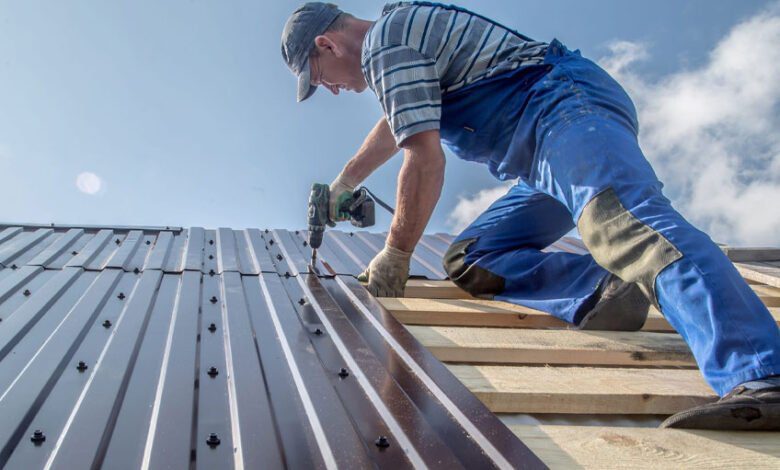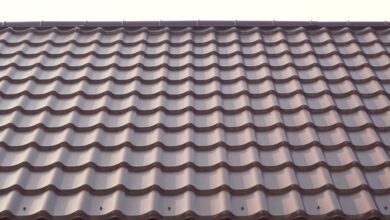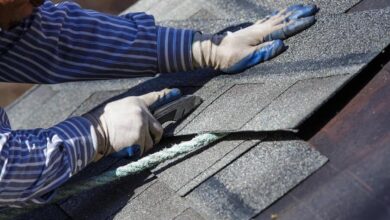How Metal Roofing Benefits the Environment

Glistening metal roofs are becoming an increasingly common sight in modern homes. Beyond the sleek aesthetic appeal, metal roofing offers unmatched durability and protection. However, metal roofs provide environmental advantages that homeowners may not realize. From energy efficiency to reducing waste, metal roofing is one of the most eco-friendly options when it comes to your home’s roof.
Common residential roofing materials like asphalt shingles have a significant environmental impact over their lifespan. Regular replacement and disposal of short-lived materials leads to rising landfill levels. In contrast, metal roofing minimizes this impact through longevity and recyclability, while also conserving energy and water.
This article will explore how metal roofing allows homeowners to reduce their carbon footprint and contribute to more sustainable living. We’ll examine the sustainability, efficiency, durability, and overall green benefits that metal roofs provide.
The Sustainability of Metal Roofing
The lifespan of the average asphalt shingle roof is just 20 years, due to weathering from sun exposure and temperature fluctuations. During that time, the roof will shed microplastics and chemical compounds into the environment. And at the end of its lifecycle, the spent roof must be disposed of in a landfill.
Metal roofing systems dramatically outlast traditional shingle roofs, with a lifespan ranging from 40-70+ years depending on the material gauge (thickness) used. This means just one metal roof install can persist for the entire time you own your home, avoiding repetitive roof tear-offs. Not only does metal roofing keep tons of waste out of landfills through its longevity, but many metal roofing materials are 100 percent recyclable at end-of-life. The sustainability of these products continues through multiple lifecycles.
Energy Efficiency and Metal Roofing
A shining metal roof isn’t just visually striking — its high solar reflectance actively repels sunlight and heat. Whereas dark asphalt shingles absorb up to 90 percent of the sun’s radiant energy, raising temperatures underneath. This translates into significantly lower cooling costs in warm weather for buildings with metal roofs.
Studies by the U.S. Department of Energy show that switching to a reflective metal roof can reduce air conditioning energy usage by 10-25 percent. That savings can amount to 8-15 cents per square foot per year — a substantial return on your roofing investment.
The concept of “cool” energy-efficient roofing refers to surfaces with high solar reflectance and thermal emittance values. These properties help roofs to absorb less heat and stay up to 60°F cooler during peak sun hours. Metal is inherently reflective, earning high ratings as a cool roofing material. Nearly all metal roof product lines meet EnergyStar and LEED surface reflectance standards for energy efficiency.
Metal Roofing and Water Conservation
Metal roofing helps the environment through efficient water usage as well. The runoff from metal roofs is an ideal source for rainwater collection systems, providing a sustainable water source for household uses. Harvesting rain runoff reduces the burden on local water treatment facilities while saving money on your water bill.
Collected rainwater can be used for irrigating lawns and gardens, washing vehicles, or flushing toilets inside. While rainwater capture is beneficial with any roof type, metal’s smooth surface and steep pitch optimize water collection efficiency. A 2000-square-foot metal roof in moderate rainfall areas can supply a household’s entire non-potable usage.
Reducing the Carbon Footprint with Metal Roofing
Beyond cost savings from energy and water conservation, homeowners can shrink their carbon footprint by installing metal roofing. Manufacturing processes for metal roofing materials use 10 times less fossil fuel energy than shingle roof production. The recyclability also means post-consumer metal scraps become feedstock for new roof production. This circular reuse pattern significantly reduces greenhouse gas emissions relative to extracting and processing new bitumen, fiberglass, and minerals.
Once installed, the solar reflectance and thermal performance of metal roofing prevent upwards of 375 pounds of CO2 emissions per roof annually. Accounting for the long service life of metal, over 50 tons of carbon emissions can be avoided over 40 years.
Durability and Maintenance
Extreme weather events are growing more severe and frequent with climate change. Hailstorms, heavy snow loads, high winds, and wild temperature swings all take a toll on traditional roofing materials. By comparison, metal roofing is lightweight yet extraordinarily strong, designed to withstand whatever nature throws your way.
Metal roofing systems rated for high wind and hail protection will safeguard your home from storms, year after year. Fire-resistant metal roofing also provides an extra layer of protection in wildfire-prone regions. Thanks to protective coatings, metal roofing stands up to oceanfront salt air environments as well.
While asphalt, wood, and other common roofing have a high maintenance burden, metal roofing requires little upkeep once installed. The occasional rinse with a garden hose is all that’s needed in most areas. Without cracks, warping, or mechanical defects to repair, metal roofing remains protective and functional for decades. This reliability keeps roof materials out of landfills and avoids manufacturing emissions from re-roofing every 20 years.
The Role of Metal Roofing in Sustainable Building Practices
Residential architects and builders receive green certification through verified sustainable construction practices. Rating systems like LEED (Leadership in Energy and Environmental Design) award points for eco-friendly building materials under categories like energy efficiency, recycled content, and lifecycle impact. Due to the aforementioned benefits, metal roofing contributes significantly to higher scores.
Specific characteristics that align metal roofing with green building best practices include:
- High solar reflectance index (SRI) for thermal performance
- 50 percent or more recycled material content
- 100 percent recyclability
- Reduced maintenance/replacement demands
- Low lifecycle environmental impact
- Contribution to rainwater harvesting potential
Case Studies and Examples
Real-world cases illustrate the tangible effects of installing metal roofing rather than conventional materials:
- An Arizona homeowner replaced 1700 square feet of tile roofing with an SRI-rated metal roof. Three years later, the annual cooling cost savings amounted to 15 percent or $227.
- A South Carolina beach cottage underwent re-roofing with a 50-year warranty steel shingle metal roof before the sale. This enhanced the property value by an appraised $20,000.
- A Colorado resort hotel installed standing seam metal roofing during renovations toward LEED Silver certification. The metal roofing contributed points under the heat island effect, solar reflectance, recycled content, and other sustainability credits.
- A California developer saved 68,000 gallons of water annually per house by installing rainwater harvesting-ready metal roofs instead of composite shingles.
Challenges and Considerations
While the environmental pros of metal roofing are substantial compared to other mainstream options, no roofing product line is without impacts. Metal production and manufacturing require abundant energy, which contributes to emissions. Transport also adds a small footprint depending on the factory location. However, recent advances are curbing these effects:
- Some leading American metal roofing brands have solar-powered production facilities. The panels offset 100 percent of the electrical energy demands.
- Cool paint technology allows darker-colored metal roof coatings to maintain solar reflectance for energy efficiency. This provides style options without sacrificing performance.
- Load-bearing panel designs with attachment clips reduce metal usage compared to seam-only standing rib roofing. The improved strength-to-weight ratio cuts transportation emissions.
Conclusion
As climate change intensifies along with environmental awareness, sustainable building practices must become mainstream. Metal architectural roofing has tremendous potential to reduce homeowner and housing industry impacts. The longevity, efficiency, low maintenance, and recyclability of metal roofing conservatively outweigh all other current roofing materials.
Homeowners considering metal roofing addition or replacement should factor long-term sustainability into the decision. While upfront costs can run higher than shingle or tile roofs, handsome returns on investment arrive over decades of service. And by minimizing environmental and carbon footprints, families can do their part through responsible roof choices. The green movement starts right overhead with the shining privilege of metal roofing.




